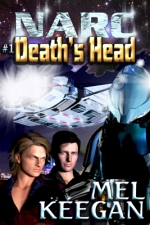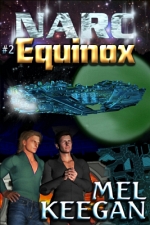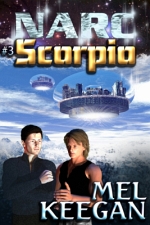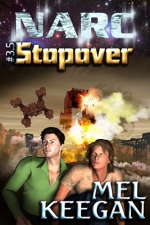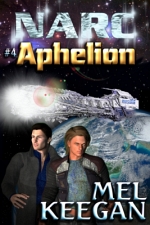 |
| Renaissance eBooks |
What does it take to edit, format and publish a book from the time an author hands over the writing to the moment when readers can buy it online?
That's a highly astute question! Let me see if I can put the process into perspective here ... and at the same time show off a little of the art I did as a cover artist for one of the other ebook publishers, while I was working with them in 2010 and 2011.
Here goes...
 |
| Renaissance eBooks: Bonds |
"Remedial" editing is just what it sounds like: a tidy-up job. Very few writers have grammar that is 105% perfect, 110% of the time. Even fewer writers will be able to hammer out a denouement that is flawless, or close to it. And even fewer will be able to achieve crystal clarify of exposition every time, all the time. A good editor will go through and make recommendations for how a work should be massaged to get it to the point where the reading experience will be highly pleasurable. And let's face bald facts: the writer is trying to please the reader, because they want to sell copies of not just this book, but their next one, too!
 |
| Renaissance eBooks: Mooning the Stars |
Some writers ... those with many years of experience ... will be able to do all this in their own heads, or perhaps somewhere between their eyeballs, fingertips and computer screens. Let's say you're already darned good and you're sure of the veracity of the work. Next job? Copy editing. Here's where sharp eyes and vast amounts of concentration come into play, and it's true that the more human eyes on the job you have, the better the result will be. Copy editing and proof reading are about scanning on the most minute level, looking for typos (typographical errors), spellos (spelling errors which will elude the spell checker), and grammos (grammatical errors). Even if you known the difference between words like discreet and discrete, and compliment and complement, you fingers can type the wrong one on autopilot, and no spell checker will pick it up. Then there's rhyming typos, and near-mis typos ... like to and too, and the and thee and three, and about a thousand more...
 |
| Renaissance eBooks: Vampire Girlfriend |
(And here, it's worth asking the key question: are you sure about your grammar and technical skills? I mean, are you dead sure? Do you know for a fact you have a strangle-hold on the vagaries of the English language, or are you still playing it by ear, taking the occasional shot in the dark, and hoping to score? If you're not so sure of your English technical skills that you can do this stuff with your eyes shut, ask a good freelance editor to look at a few pages for you. Don't submit pages that have been corrected by someone else -- send your own words, just as you write them. If they come back heavily annotated, you'll know it's time to hit the books and learn this trade before you try to sell your work.)
 |
| Renaissance eBooks |
So the next step in this logic chain is packaging. Once you've reached the point where you firmly believe the body of the work is polished till it shines, it's time to get it into a shape that's acceptable at market. To quote Han Solo, this is where the fun begins.
 |
| Renaissance eBooks |
Everyone in the world can make a pdf these days, so I won't even go there; but epub is still new enough to be worth talking about. Even now, it's a marginal format -- meaning, fewer people are using it than ought to be ... because it's not only better than pdf, it's far, far better than pdf, and if the format is properly promoted in the near future it won't go the way of Betamax! If it does, I'll be grinding my teeth, because epub is the perfect format for any device I own (BeBook, Android tablet, smart phone, laptop, desktop) while pdf gives me no end of headaches on the BeBook and 7" Android tablet ... and on the phone, phhhtttt. Forget it. Phones hate pdfs. Yet most people (up to 80%, according to the forecast) will be reading on phones inside the next few years!
 |
| Renaissance eBooks |
Now you're cooking: the book is well thought out and plotted, well written and edited, proofread to death; you've done your html for upload to Kindle, your epub and pdf making software is on standby. Now -- now! -- is the time to think about your cover art. And this is where someone like me comes into the picture.
 |
| Renaissance eBooks |
 |
| Fabian Black |
 |
| Fabian Black |
Lately, Lulu has branched out into ebooks. Not only that, but Lulu will put you into a lot of the same stores that Smashwords reaches ... moreover, somehow (and I have no idea why), the sales at Nook and so forth tend to be a leeeetle but better via Lulu than via Smashwords. But here's the big thing: the process of getting to Nook and iBooks via Lulu is very, very easy. You send them a pdf and they do the rest. There's only small downside: the epub file will have unjustified text. Before you have the heebie-jeebies about this (too late, right?) it's a good idea to do some research not only into the devices people will be using to read, but also into the software they'll be reading in. One of the most popular epub readers -- free and downloaded hundreds of thousands of times -- is known as Moon Reader. And no matter how brilliant your epub is, Moon Reader will not display justified text. So, before you ditch Lulu as an avenue to get you easily, painlessly, into the ebook stores, think about the number of people who're reading on Moon Reader. Ahhh....so.
Now that you have have your stock and distribution figured out, you're ready to start marketing ... and you'll be asking, "How do I sell books?" That really is another question, and not one I'm going to tackle here, because it's way outside the scope of the original question. However, Mel Keegan has written a fantastic article on this subject, which is about to appear in a book, some time in July 2012. When that book comes out, I'll return to this post and update it with the url.
So ... how long does it take to go from Finished Book, to In-store and Earning? This depends on how much editing you need to go through, how long the book is, how many proofreads you can organize, how exacting you'll be with the cover art, and if you go smoothly through the process of upload to the engines which get you into the stores. Kindle takes just a couple of days to get a book into the catalog ... on the other end of the scale, if you decide to publish in paperback too, you'll need to format everything, then order a physical proof for delivery by mail, give it the OK, or correct it and go to another proof, and so forth. Paperbacks are a different animal, and a complex one, which might account for why the vast majority of publishing these days concerns ebooks! If you can organize reliable editing and proofreading, and you know what you're doing with the software, you can get through a normal-length book in a month or so. That's a book of something like 80-100,000 words. Longer books simply take more time. An artist should be able to deliver a finished work in anything from a few days to a week, depending on what complexity you're asking for. Then, entry to the Kindle catalog takes a couple of days, and getting to B&N, iBooks et al via an aggregator can take from a few days to a few weeks.
Then the marketing starts ... and as I said, I won't tackle that here, but will wait till the book for which MK has recently written a very good feature is released, and will return and update this with the url.
Hope this has been useful!
Jade, July 22


























































